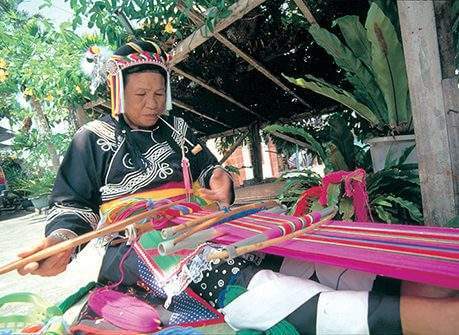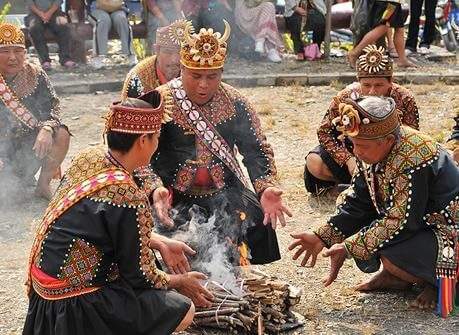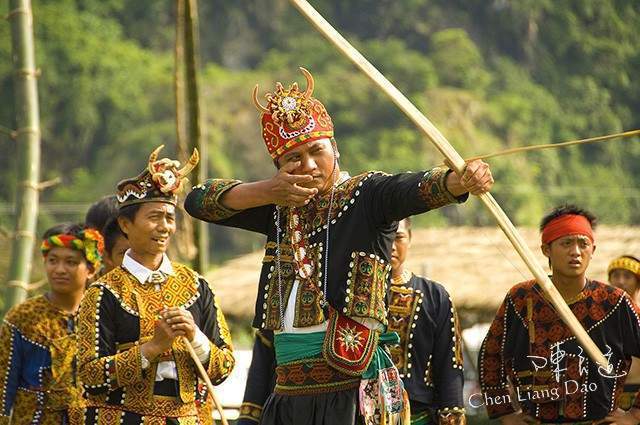
Amis
Amis in Taitung can be divided into three groups: the Nanshi Amis, are distributed mostly in Guanshan Township; another located in Changbin and Chenggong Township is Central Amis, composed of Hainan and Hsiukulan Amis; and the third group located in Chenggong, Donghe, Guanshan, Chrshang, Luye, Taitung, Beinan, Taimali and Dawu, including Beinan Amis and Hengchun amis.
Recommended Aboriginal Culture Tour
Guided Tour English speaking tour guide
Tribal Tour→Experiencing Indigenous Ocean Culture→Vegetable Picking→Meal Time→Home
Activities: Shell-flower weaving, cotton crafts

Paiwan
The Paiwan, well known for their talented arts-and-crafts, and livelihoods dependent on the sea. Most of the tribe reside in Jinfeng, Daren, Taimali, Dawu Township in Taitung County. The quantity of chiefs of Sapulju in Jinfeng is more than the other tribes. Visitors to the community will find many paintings and stone carvings, records of the Paiwan traditional culture. Visitors can also experience weaving, embroidery, making preserved roselle and making Ceramic beads at Jialand Bayi Workshop.
Tuban village in Daren Township is another well-preserved Paiwan tribe. Many woodcarvers, artists, and cultural workers living in the village strive to pass down the traditional culture. Two of the Paiwan’s mostly commonly seen decorative patterns in the village are the hundred-pace snake and Taiwanese lily, both are sacred symbols to the Paiwan. A visit to Paiwan village is a journey through art and creativity.
Recommended Aboriginal Culture Tour
Guided Tour
Introduction to Aboriginal Culture→Visiting Chiefs’ Houses→DIY Traditional Crafts
Activities→Joy of Harvest→Experiencing Indigenous Culture
Activities: DIY coin purses and souvenirs activity, weaving, exploring the mountains with a local aboriginal guide

Bunun
Bunun, a mountain indigenous tribe are located in the middle part of Central Mountain Rang, particularly in Yanping Township and Haiduan Township in Taitung County. Visitors to the village can experience and enjoy the beauty of Bunun culture. The Bunun use stages of the millet’s growth to divide months and years. The schedules of agricultural activities and hunting are based on the life cycle of plants and by the lunar cycle. As recorded on the “picture calendar”, the Ear Shooting Ritual, the most important ritual of Bunun, takes place every April and May.
The Bunun are noted for their braveness, calm and strength; they express their emotions through song or action. Their world famous Pasibutbut, an eight-part harmony, is a song in prayer for a bountiful millet harvest. When the gamut rises, more than five musical scales can be heard. This beautiful performance is the most precious treasure of the Bunun.
Recommended Aboriginal Culture Tour
Guided Tour
Luan Shan Police Station→Visiting the “Walking Trees”→Mountain-top viewing platform and Heaven Gate→Forest Museum Observatory→Luan Shan Forest Museum→Aboriginal Cuisine→Introduction to Aboriginal Houses→Bunun Botanical Garden→Mochi Making→Home
Activities: Mochi making

Puyuma
The Puyuma people mainly live in Taitung plains from the south coastal area of Puyuma River to the north of Jhihben River, including the Beinan Township and Taitung City. They can be divided into eight sub tribes: Jhihben, Chienho, Lichia, Taian, pina, Meilung, Chulu, Nanwang and Wenchiuan. They are also known as Eight Tribal Communities. Although they live by the sea, the Puyuma were Sinicized and relied on plow agriculture.
Flowers are important to the Puyuma people; they enjoy wearing flower wreaths symbolizing blessing and friendship. They also pass down the beauty of the culture through the action of creating beautiful flower wreaths. The yearly ritual from December 24th to January 2nd, represents ending the year. The ritual includes a series of the Puyuma peoples most important rituals to rid bad luck and evil away, while welcoming the upcoming New Year. Monkey Ritual, an adulthood ceremony for men, and the Grand Hunting Ritual, celebrate entering the youth committee, are all significant rituals of the Puyuma.

Tao
Tao resides on Orchid Island, surrounded by the sea. Due to the geographical location, they are the only tribe in Taiwan that make their living by fishing and have preserved most of their distinctive culture. They are called “the People of Flying Fish”. Sea Rituals, including Fish Ritual, Boat Ritual, and Millet-pounding Ceremony, are the most important rituals in their traditional religion. The Tao sing and dance to celebrate the rich harvest of fish.
The Tao community is self-sufficient. Besides fishing, their livelihoods rely on growing wetland taro, other plants, and feeding goats. The Tao people are skilled at ceramics, making silver goods and building plank boats. The cave-dwelling houses in Langdao Village preserve the traditional architecture and has become one of the must-see spot on Orchid Island.

Rukai
Dalumake Village is the only Rukai tribe in Taitung. The Rukai people have developed unique art and culture. Art crafts including weaving, embroidery, and rattan household items are delicate and highlight their talent.
The Harvest Ritual in July is the most important annual ritual of Rukai. During the ceremony, the Rukai people host the “Swinging on the Swing” custom, which is a critical social activity for the tribe’s youth. Rukai girls dressed in traditional attire with beads, shells, sequins, and agates take turns swinging as Rukai boys push the swing for their lovers. This custom also emphasizes the unique Rukai culture.

Kavalan
The Kavalan people are a part of the Taiwanese aboriginals. They have strong ethnic traditions.
They preserve their traditions and culture – their way of life. They maintain traditions that are essential to the preservation of Kavalan culture: the language, ceremonies (e.g. Palilin), religious rituals performed by Metiyu (priestess), harvest festivals and banana fiber weaving.
Changbin Village is the largest Kavalan tribe in Taitung. The community is self-sufficient and relies on shifting agricultural sites, hunting by burning the forest, hunting for food such as fish and deer. The important sea ceremony takes place during March and April and usually lasts for two to three days. The Kavalan men gather together on the beach and hold LaLiGi to worship the sea god to ask for protection and blessings for fishing. After worshiping the sea god and their ancestors with the elders, the young men depart to go fish and return around noon. People will cook seasonal vegetables and what they catch and share with the tribe.




